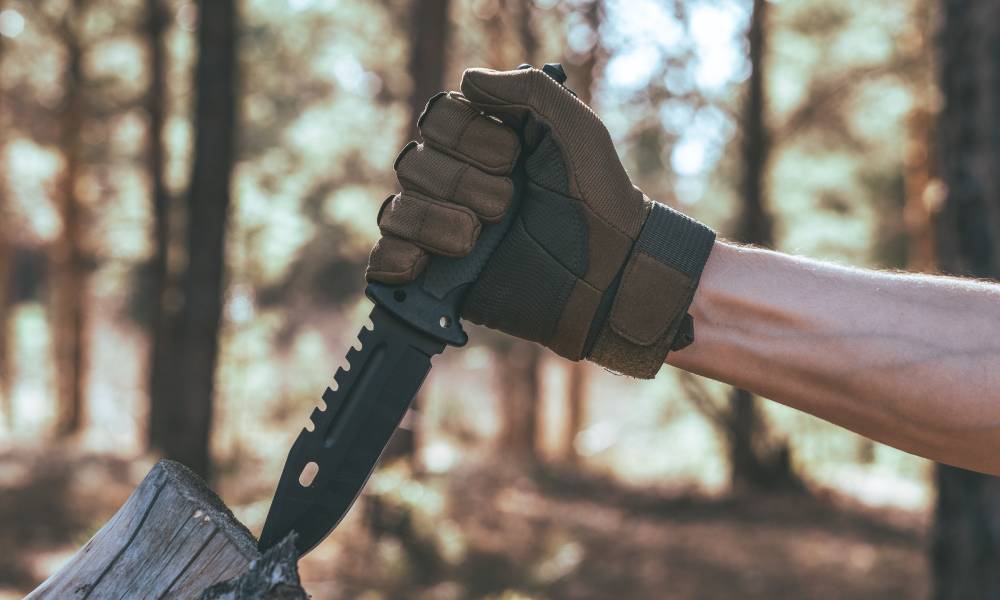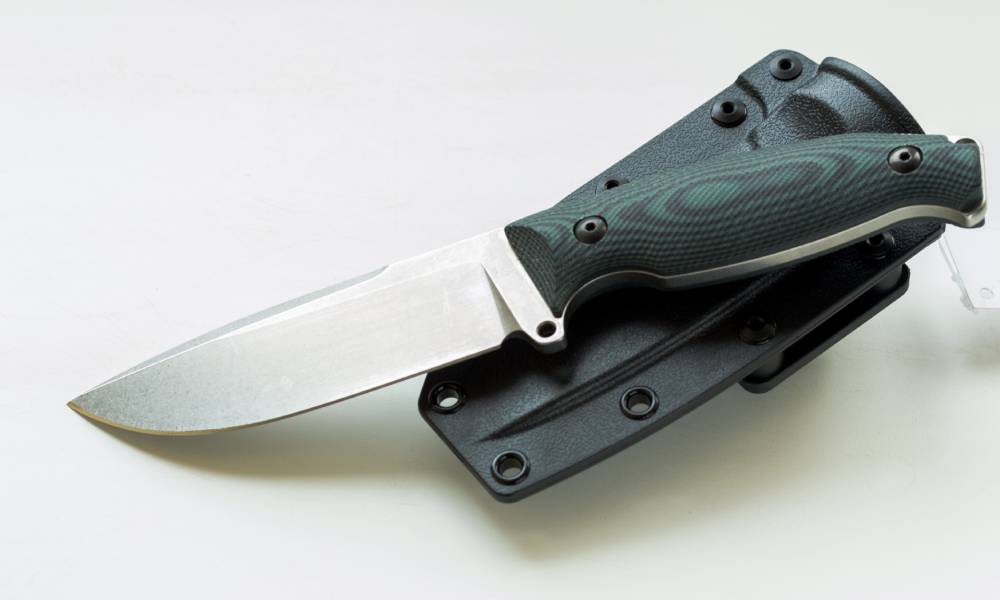The Influence of Handle Shape on Knife Performance
Jun 3 2024 - 1:35
Many knife enthusiasts focus much of their attention on the characteristics of the blade when it comes to the knives in their collection. While a blade’s composition, edge geometry, and finish are important, a lot more goes into determining how good the quality of a knife is.
Most notably, the knife handle is just as important. In fact, the shape, size, and material of a knife’s handle can significantly influence its utility, user comfort, and safety. This comprehensive guide dives into the influence of handle shape on knife performance and the considerations one should make when choosing the right handle.
Understanding Knife Handles
Before we can go into detail about handles’ effect on performance, we first have to talk about knife handles in general.
Materials and Their Impact on Grip and Longevity
Knife handles come in a diverse array of materials, ranging from natural ones like wood and bone to synthetic options such as G-10, Micarta, and carbon fiber. Each material offers different levels of grip, durability, and resistance to environmental factors.
For instance, while handles with natural materials can provide a warm, comfortable grip and stunning aesthetics, they may require more maintenance and can be prone to swelling or cracking over time. Synthetic materials, on the other hand, offer excellent durability and moisture resistance but might not provide the same organic feel or grip texture as natural materials.
Ergonomic Considerations for Handle Design
Ergonomics plays a pivotal role in the design of knife handles. A well-designed handle will comfortably fit in your hand. This will help you have a more secure grip that doesn’t lead to fatigue or discomfort during extended use.
The shape of the handle should follow the natural contours of the hand, with features like finger grooves and thumb ramps to enhance grip and control. Poorly designed handles can lead to inefficient force application, increasing the risk of injury and reducing the precision of cuts.
The Influence of Handle Shape on Cutting Technique

Now that we know the basics of handle design, let’s take a look at how those concepts play into how we hold and use our knives. This is crucial to know to ensure you’re getting the most out of your blade.
Hand Positioning and Force Distribution
The shape of a knife’s handle influences how the hand interacts with the tool, affecting the distribution of force during cutting tasks. A handle that aligns naturally with the user’s grip allows for a more direct and efficient transfer of energy from the hand to the blade.
This can make cutting tasks feel easier and more controlled, minimizing strain on the hand and wrist. Conversely, a poorly shaped handle requires awkward hand positioning, leading to inefficient force application and increased fatigue.
Examples of Handle Shapes and Their Suitability for Various Cutting Tasks
Something worth noting is that different cutting tasks may benefit from specific handle shapes. For instance, a chef’s knife with a slightly curved handle can facilitate the rocking motion for chopping vegetables. Likewise, a straight handle may be more desirable on a carving knife for long, smooth slicing motions.
In most cases, the shape of the handle will likely match the knife’s initial design intention. However, this isn’t always the case. Some low-quality knife manufacturers don’t put in the effort to specialize their blades. Plus, if you ever decide to use a knife for a different purpose, the handles might not match up.
Knife Handle Customization

When the handle doesn’t seem to match the intended use of the knife, this is where handle customization can come into play. Most handles on blades are swappable, so we’ll cover some things you should know about this.
Impact of Personal Preference on Performance
While most commonly used by people looking to personalize their blades, custom knife handles have become popular for enthusiasts seeking the perfect fit and feel. The beauty of custom handles is that you can tailor them to match the exact size and shape of your hand, providing optimal comfort and control.
This customization can significantly enhance the knife’s performance. This is because a handle that intuitively feels right reduces the cognitive load on the user, allowing for more focus on the cutting task itself.
Considerations for Choosing a Handle That Fits
When considering a custom or aftermarket handle, think about the types of cutting tasks you perform most frequently. The handle shape should complement these tasks, supporting your natural hand movements and cutting techniques.
Also, take into account material preferences while looking for a balance between functionality, maintenance requirements, and aesthetic appeal. While a handle may look appealing, its practical application and conformity to your hand are what ultimately contribute to the knife’s performance. Many users tend to prefer ESEE knife handles for general outdoor use, but be sure to take the time to find the shape that best suits your needs.
What Else Can Affect Knife Performance?
Even though our primary focus for knife performance has been on the influence of handle shapes, this represents only a fraction of the relevant considerations.
Qualities of the Blade
On top of the attributes of the handle, the blade’s quality is paramount, encompassing its material, inherent sharpness, and geometric design. All of these features will dramatically influence how the knife performs during various cutting tasks. The choice of material, for instance, affects the blade’s durability and resistance to wear and corrosion. Meanwhile, the sharpness and angle of the edge determine the knife’s efficiency in cutting through different materials.
Maintenance
In addition to the physical attributes of the knife, maintenance practices play a crucial role in preserving its condition and functionality. Regular sharpening ensures the blade maintains its optimal edge. Additionally, proper storage protects it from environmental factors that could degrade its quality.
Usage
The final key component that contributes to the knife’s effectiveness is the skill and technique of the user. A well-designed knife can showcase its full potential only in the hands of someone who knows how to use it correctly.
This includes understanding the appropriate cutting techniques for different tasks and how to apply the correct amount of pressure and angle to achieve the desired results. If you have a great knife but still experience issues when using your blade, consider looking for some professional expertise on what you might be doing wrong. Once you get that sorted out, you should have a much easier time using your knife.
